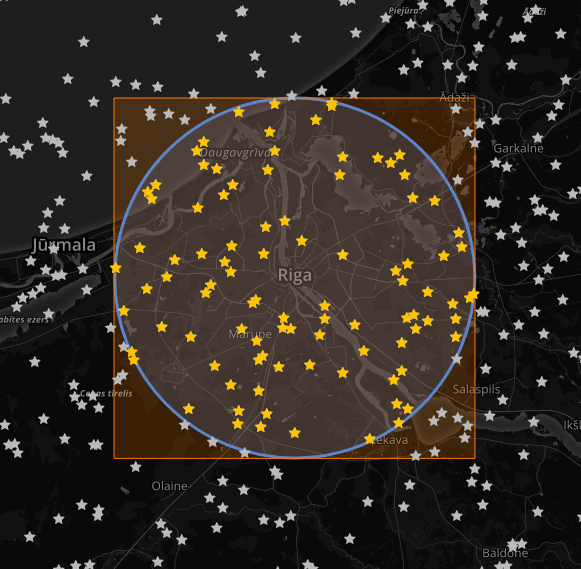Not a MySql specific answer, but it'll improve the performance of your sql statement.
What you're effectively doing is calculating the distance to every point in the table, to see if it's within 10 units of a given point.
What you can do before you run this sql, is create four points that draw a box 20 units on a side, with your point in the center i.e.. (x1,y1 ) . . . (x4, y4), where (x1,y1) is (givenlong + 10 units, givenLat + 10units) . . . (givenLong - 10units, givenLat -10 units).
Actually, you only need two points, top left and bottom right call them (X1, Y1) and (X2, Y2)
Now your SQL statement use these points to exclude rows that definitely are more than 10u from your given point, it can use indexes on the latitudes & longitudes, so will be orders of magnitude faster than what you currently have.
e.g.
select . . .
where locations.lat between X1 and X2
and locations.Long between y1 and y2;
The box approach can return false positives (you can pick up points in the corners of the box that are > 10u from the given point), so you still need to calculate the distance of each point. However this again will be much faster because you have drastically limited the number of points to test to the points within the box.
I call this technique "Thinking inside the box" :)
EDIT: Can this be put into one SQL statement?
I have no idea what mySql or Php is capable of, sorry.
I don't know where the best place is to build the four points, or how they could be passed to a mySql query in Php. However, once you have the four points, there's nothing stopping you combining your own SQL statement with mine.
select name,
( 3959 * acos( cos( radians(42.290763) )
* cos( radians( locations.lat ) )
* cos( radians( locations.lng ) - radians(-71.35368) )
+ sin( radians(42.290763) )
* sin( radians( locations.lat ) ) ) ) AS distance
from locations
where active = 1
and locations.lat between X1 and X2
and locations.Long between y1 and y2
having distance < 10 ORDER BY distance;
I know with MS SQL I can build a SQL statement that declares four floats (X1, Y1, X2, Y2) and calculates them before the "main" select statement, like I said, I've no idea if this can be done with MySql. However I'd still be inclined to build the four points in C# and pass them as parameters to the SQL query.
Sorry I can't be more help, if anyone can answer the MySQL & Php specific portions of this, feel free to edit this answer to do so.

